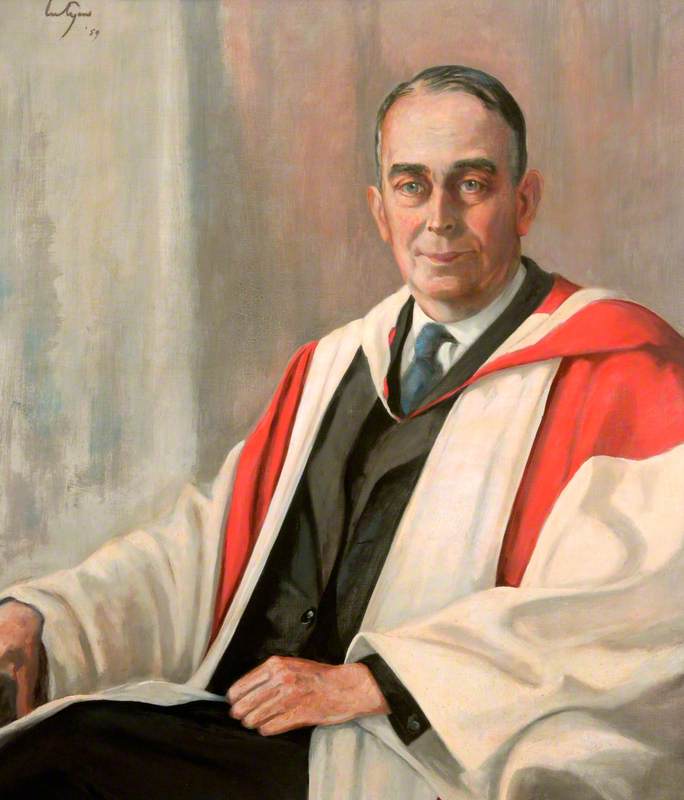
Robert Lutyens was born in London, England on 13 June 1901. He was the son of the architect Sir Edwin Landseer Lutyens (1869-1944). He studied at Cambridge University, but was required to leaving after failing his exams. He was then appointed Sub-Editor at 'Country Life' magazine in June 1919. In the early 1920s he began working as an interior designer and painter. Between 1927 and 1931 he was in partnership with Robert Wemyss Symonds (1889-1958) in the architectural and interior design firm Symonds & Lutyens Lutyens received commissions to design the interiors of houses of several directors of the retail firm Marks & Spencer (M & S) and their relatives. Despite no formal training as an architect, he was elected a Licentiate of the Royal Institute of British Architects (LRIBA) in 1937 and acted as a consultant architect, in association with J M Monro & Son, in developing a modular scheme which formed the basis of the façade design for over 40 M & S stores around Britain.
Robert Lutyens designed a few houses including 19, Hill Street, London (1929); 36, Hill Street, London (1935); Ridgemead House, Ridgemead Road, Enfield Green, Surrey (1937); 15 & 17, Catherine Place, London (1938); Blagdon Hall, Blagdon, Northumberland (1948); and Duke's Cottages, Narrowgate, Alnwick, Northumberland (1948). During the late 1930s he collaborated with his father in designing a pair of two-storey lodges and the principal building at Middleton Park in Oxford.
Paintings by Robert were exhibited at the Royal Academy in London in 1936 and 1939.
Robert Lutyens died in South Cerney, Gloucestershire in March 1972.
Examples of his paintings are in the permanent collections of the National Portrait Gallery in London; St. Hughes College, University of Oxford; University of Newcastle; The Guardian News & Media Archive; and the Ruth Borchard Collection.
Text source: Arts + Architecture Profiles from Art History Research net (AHRnet) https://www.arthistoryresearch.net/








